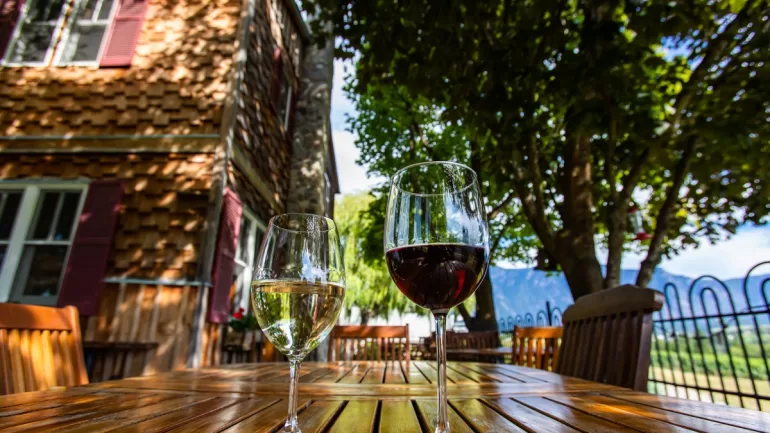ART & DESIGN
Wine country living calls for a different approach to interior design. The rolling vineyards, rustic charm, and laid-back atmosphere create the perfect backdrop for homes that blend sophistication with comfort. Whether you’re designing a weekend retreat or considering rural land options near wine country for your next project, these trends capture the essence of vineyard living while maintaining the polish your creative clients expect. Let’s get into the details!
Earthy Color Palettes That Mirror the Landscape
Wine country interiors design trends embrace colors pulled straight from the surrounding environment. Think warm terracotta, deep burgundy, sage green, and weathered stone gray. These hues create spaces that feel connected to the vineyard landscape without screaming “theme park.”
Designers pair these earthy tones with crisp whites and cream to prevent rooms from feeling too heavy. The result? Interiors that feel grounded and airy—perfect for those long afternoons when natural light streams through oversized windows.
Natural Materials Take Center Stage
Authenticity drives material choices in wine country homes. Raw wood beams, natural stone fireplaces, and hand-hewn dining tables tell stories of craftsmanship and permanence. These materials age beautifully and develop character over time just like a fine vintage.
Popular material combinations include:
- Reclaimed oak paired with sleek concrete countertops
- Rough-hewn stone walls balanced with polished brass fixtures
- Woven jute rugs layered over wide-plank hardwood floors
- Hand-forged iron hardware on custom cabinetry
Indoor-Outdoor Living Gets an Upgrade
Wine country homes blur the boundaries between interior and exterior spaces more seamlessly than ever. Architects design rooms that flow naturally onto terraces and patios, creating perfect spaces for entertaining clients or hosting gallery openings under the stars.
Retractable glass walls, covered outdoor kitchens, and fire pits surrounded by built-in seating transform outdoor areas into functional extensions of the home. These spaces work especially well for creative professionals who want to showcase art in natural settings or photographers seeking unique backdrops.
Statement Lighting Inspired by Vineyard Architecture
Lighting fixtures in wine country homes draw inspiration from agricultural structures and winemaking equipment. Oversized pendant lights crafted from aged metal, chandeliers fashioned from reclaimed barrel hoops, and industrial-style track lighting create dramatic focal points.
These statement pieces work particularly well in homes with high ceilings and open floor plans. They provide necessary task lighting while adding architectural interest that complements the rustic-refined aesthetic.
Cozy Gathering Spaces That Encourage Connection
Wine country design prioritizes spaces where people naturally come together. Designers create multiple seating areas within larger rooms, using area rugs and furniture placement to define intimate conversation zones.
Oversized sectional sofas, built-in window seats with plush cushions, and dining tables that seat ten create invitations for lingering conversations. These spaces suit creative professionals who frequently entertain clients, collaborate with colleagues, or host intimate gatherings.
Art Integration That Celebrates Local Culture
Wine country homes provide stunning canvases for displaying art collections. Other common interior design trends are gallery walls featuring local artists, sculpture gardens that complement vineyard views, and custom-built display alcoves to create sophisticated showcases for creative work.
Many designers incorporate wine-related artifacts—vintage bottles, antique corkscrews, or historical vineyard photographs—as decorative elements that honor the region’s heritage while maintaining artistic integrity.
These trends reflect a broader movement toward homes that celebrate their surroundings while providing sophisticated backdrops for creative work. Wine country design succeeds because it balances rustic charm with the polish that design professionals expect.
